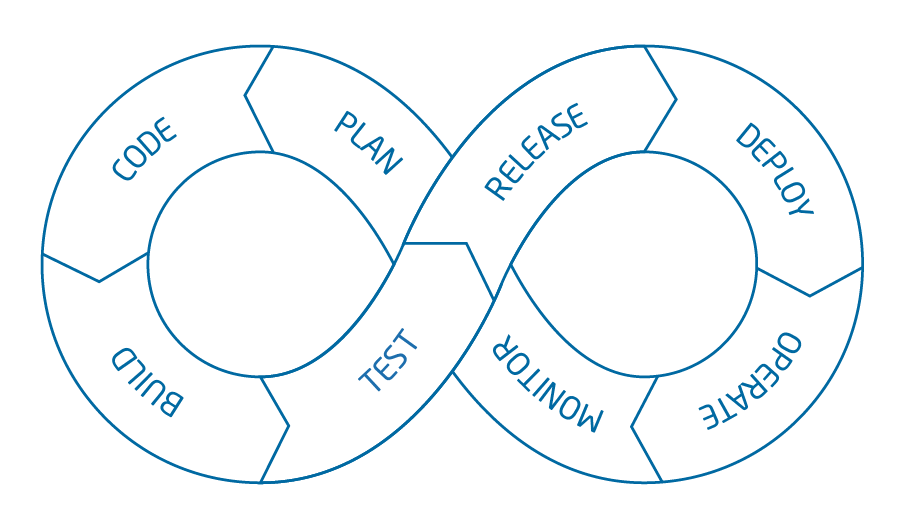We can help you bridge the gap between your software development and operation teams and achieve goals better and quicker. Let’s cooperate smartly based on a nearshoring and offshoring basis.

We can help you bridge the gap between your software development and operation teams and achieve goals better and quicker. Let’s cooperate smartly based on a nearshoring and offshoring basis.

for quicker delivery of new features or software products
to ensure that the code is of high quality based on various test automation tools
for releasing software updates to users in an efficient and balanced manner
to automate the integration of code changes from multiple contributors into a single software project
for smaller and more frequent software releases, which lets developers quickly receive feedback from users and develop a better product as a result
We usually operate the following DevOps automation tools and platforms to ensure a successful DevOps journey. We can also adapt to any other DevOps tools and platforms you want to use.
We follow a highly detailed process, briefly described below, to deliver high-quality DevOps services to our clients.

We have been carrying out DevOps-driven projects for 10+ years. Our DevOps team consists of over 40 specialists.
Full outsourcing of software development based on DevOps principles will let you focus on your core business.
We can assist you in introducing DevOps principles to your software development life cycle from scratch or just to solve a few problems in your current DevOps operations.
Extending your DevOps team with our experienced DevOps developers who will not only help you in software development, but also share best practices.

Let me be your single point of contact and lead you through the cooperation process.
Choose your conversation starter
Signed, sealed, delivered!
Await our messenger pigeon with possible dates for the meet-up.

Not ready to get in touch? Take a look at the most common questions and answers we prepared.
DevOps (Development and Operations) is a methodology that assumes the combination of two areas that usually function separately: development (Dev) and operations (Ops) teams. The purpose of this solution is to achieve established goals better and faster.
The key principles of DevOps include automation, iteration, continuous testing and improvement, and enhanced collaboration.
According to a survey by RedGate Software from 2021, 74% of enterprises throughout the world have already adopted DevOps in some form, an increase of almost 100% in 5 five years. This number includes all the most-known tech companies, such as Amazon, Google, Microsoft, and Netflix, that use DevOps to increase efficiency and improve the delivery time of their software development processes.
With DevOps, you can bring several benefits to your organization, including:
The top obstacles to an effective DevOps effort include a lack of appropriate skills in the team, disruption to existing workflows/business, and a lack of alignment between development and operations teams, according to a survey by RedGate Software from 2021.
There are three areas that can be heavily automated with DevOps. They include:
At Multishoring we maximize the productivity of our DevOps teams using the following techniques:
DevOps tools play a crucial role in supporting DevOps implementation. Rapid buildup of software and progressive planning of sprints require more adaptive technologies. The framework of Continuous Development/Continuous Integration (CD/CI) means that software is managed by versions and the entire software development life cycle is fully automated from coding into compiling then testing and deployment onto production.
There are many DevOps tools available in the market that can support this process. Below there are just a few examples of such tools. It is also important to mention that tools are only relevant when they are used at the last stage i.e after the organization has already adopted the philosophy of DevOps and there is a commitment to executing its best practices.
No, Agile and DevOps are not the same. The thing they have in common is that Agile and DevOps both aim towards delivering quality software in a timely manner. The key difference between Agile versus DevOps is that Agile is a philosophy about how to develop and deliver software, while DevOps is focused on how to continuously deploy code with the use of modern tools and automated processes.
Combining DevOps and Agile for software development is a very popular method for increased productivity and delivery of high-quality software products. The approach can also optimize the incremental development of the software and its maintenance.
Such a combined approach to software development is practiced at Multishoring. Our Agile and DevOps-driven software development process includes: